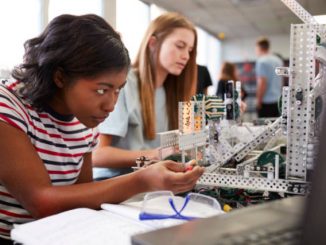
[dropcap]The[/dropcap] number of school-leavers going on to apprenticeships in Ireland rose by 24 per cent last year.
Solas figures revealed that Irish apprenticeships increased from 10,445 in 2016 to 12,849 last year.
The expansion of apprenticeship options in recent years, combined with increased government investment into the sector and increased communications with guidance councilors and parents, have contributed to this increase, according to a Solas spokesperson.
However, only 2-3 per cent of Irish school leavers are reportedly pursuing apprenticeships, with almost 60 per cent progressing on to higher education.
Developing new apprenticeships
€122 million was allocated to apprenticeship training in Budget 2018, an increase of 24 per cent from 2016, and 26 new programmes are forecasted to be announced on March 30th according to the Irish Times.
Projected to be developed by June 2019, these new apprenticeships will incorporate a wider range of employment fields, such as systems engineering, cybersecurity and animation.
Industry bodies have worked with education providers for two national ‘calls’ to develop new apprenticeships, according to Solas communications manager Maria Walshe.
“That continuous relationship between the education system and employers is hugely important to make sure that the apprenticeships being developed are relevant” Walshe said.
Projected impact
A total of 31,000 new apprenticeship registrations are predicted by 2020 in Solas’ Apprenticeship expansion plan 2016-20: a 74 per cent majority in craft based apprenticeships (22,908) and 26 per cent in ‘new apprenticeships’ (8,092).
Newer apprenticeship programmes will vary from level five to level ten, combining work experience with online training, according to Walshe.
Programme types were broken down into construction, electrical, engineering, financial, hospitality, motor and print.
Of all Irish apprentices recorded in 2017, just over 1 per cent were female (151). However, this proportion has near-doubled since last year (0.6 per cent).
Over 40 per cent of apprenticeship programmes had no female participants in 2017. However, almost 29 per cent of apprentices in newer consortia-led programmes, such as financial services and cheffing, were women.
An increased focus on communication and role-models is key to address barriers for women going into apprenticeships according to Walshe.
“The ESB have two female apprentices that have been involved in their recruitment programme this year, and that’s very useful because they’re going out and talking to their peers… and it kind of opens it up, I suppose, for females” Walshe said.
Niall O’Donoghue
Image Credit: Pinterest



